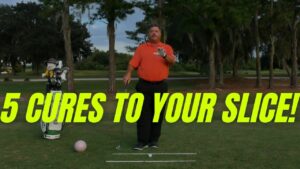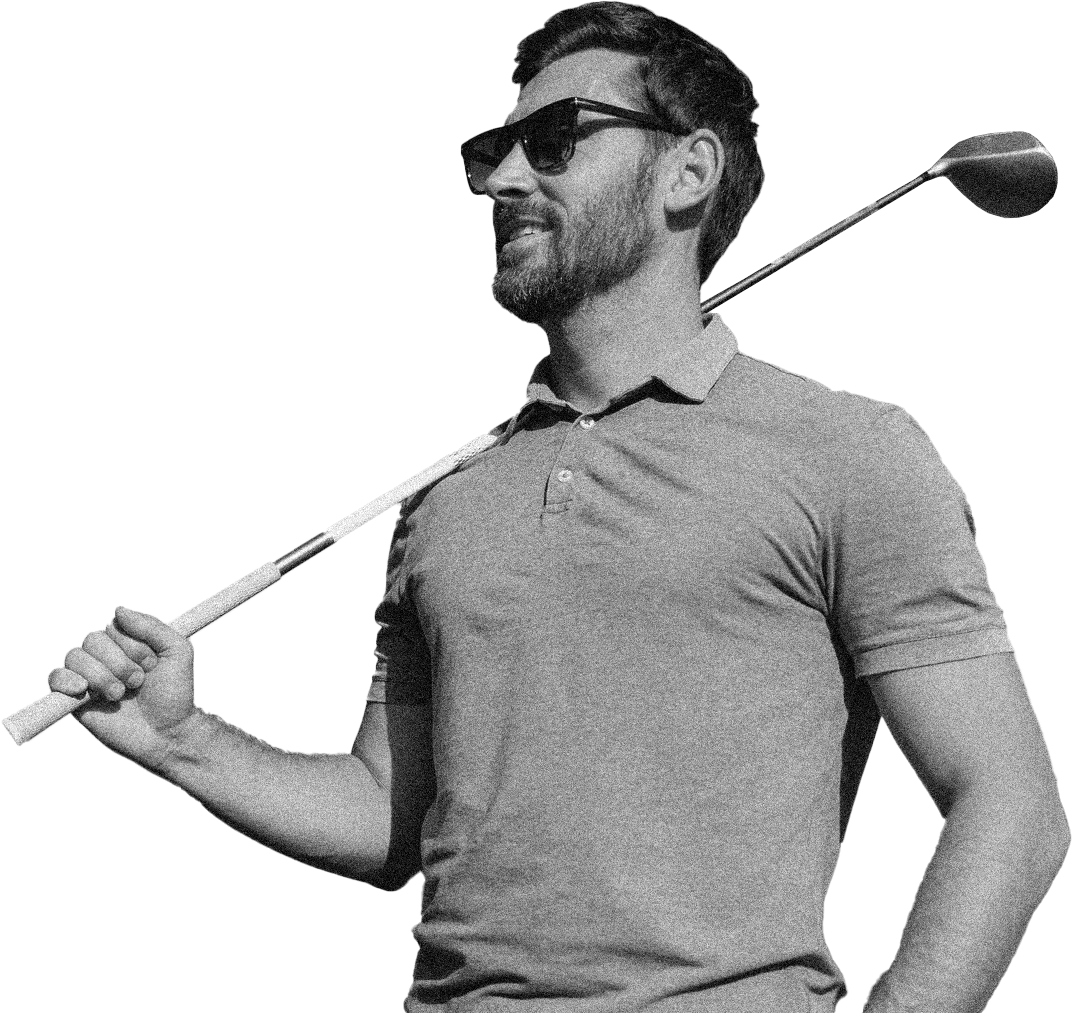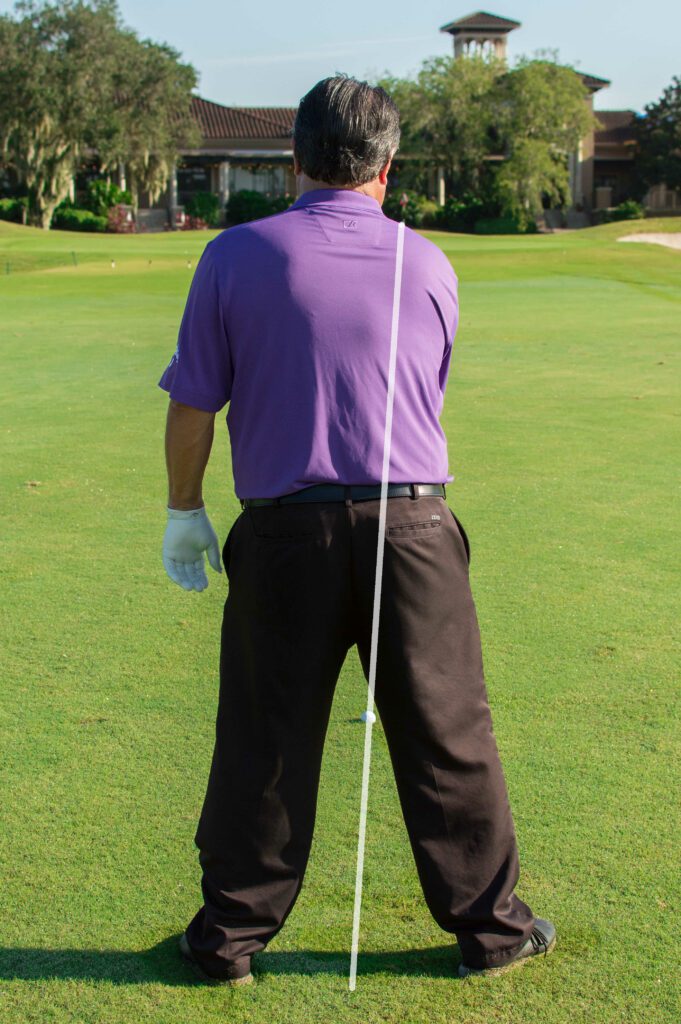How do you insure you are able to aim and align correctly? Simple, stand on the target line, not beside it!
If you’re a loyal John Hughes Golf follower, you know how important alignment is to you and your golf game. I’ve authored plenty of blog posts, magazine articles, as well as produced several YouTube videos about the subject. Yet I still see golfers struggle with this most important basic principle. Why?
You have a “Visual Bias”
What most golfers don’t realize is everyone has a “visual bias.” Meaning, your eyes and brain, communicating to each other in milliseconds, prefers to see things a certain way, based upon several factors. Some of those factors are which eye is more dominant than the other versus which eye do you actually use to aim with? Which side of your body is stronger than the other? As well as which side of your body do you tend to favor when casually standing? There are other factors in force as well. But what it all adds up to is you standing on one side of the target line or the other. And not standing on top of or “Straddling” the target line.
Throughout my career as a golf coach, I have noticed a common thread amongst all golfers, you tend to stand on the side of the target line you play from. Meaning, if you’re a right-handed golfer, your tendency is to stand on the left side of the target line as you take aim. The opposite is true for left-handed golfers.
Some will argue that this trend is based upon your effort to aim with what you perceive to be your dominant eye. However, just because you’re right-handed doesn’t mean your right eye is your dominant eye. Your eyes work in tandem more often than not. Which is why it is so important to allow both eyes to function as one unit when aiming to a target.
One Side is More Convenient
Beyond the ocular reasons why you might favor one side of the target line or the other, I believe you stand to one side for a simpler reason. Convenience. It’s a lot more convenient as a right-handed player to stand to the left of the target line. Why? It’s a few less steps to the ball than standing on top of the target line. Convenience can influence your visual bias if you allow it to.
It’s also more convenient to use one eye to aim and align. But because you most likely have both eyes open as you go through the process, you’re actually creating an unintended visual bias.
Combine this with you are also most likely standing too close to the golf ball when you are aiming with a visual bias, your brain is never really seeing the true image of the ball directly in line with your intended target.
What’s the Fix?
So how do you correct this trend? Simple. Be sure you are directly behind the ball, in line with your intended target. You’ll see your target line more clearly.
Straddling or standing on top of your target line is simple yet forgotten. Here is a simple 2 step process to ensure you see your target line more clearly and stand on top of your target line.
- Make sure when you stand at least 10 feet behind all your shots. It’s hard to see and understand your target line when you stand so close to the ball. As you back away from the ball, your eyes have better “depth of field” to line up the ball with your intended target. If you wear corrective lenses and or need “readers,” 10 feet may not be enough distance for you to clearly see your target line.
- Imagine a string that is pulled from your target through and past your golf ball. As you stand with the string between your feet, are your feet an equal distance from the string? If so, you’re standing on top of your target line.
Conclusion
Standing on your target line sounds simple. It is simple, if you’re paying attention to the details of finding and clearly seeing your intended target. Resist convenience. And work through your visual bias. If you do, you’ll find that aiming and aligning to your intended target becomes more accurate.






